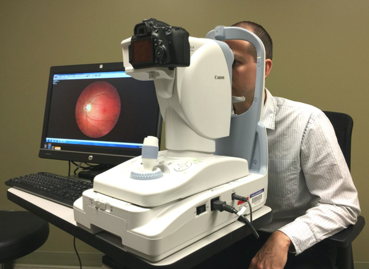Predicting Blood Pressure from the retina using Deep Learning
File:Retina DNN analysis Alex.pdf
Contents
Retina Image Analysis
Background and Motivation
Heart disease has been the leading cause of death in the world for the last twenty years. It is therefore of great importance to look for ways to prevent it. In this project, funduscopy images of retinas of tens of thousands of participants collected by the UK biobank and data of biologically relevant variables collected in a dataset are used for two different purposes.
First, GWAS analysis of some of the variables in the dataset allows us to look at their concrete importance in the genome. Second, the dataset was used as a means of refining the selection of retinal images so that they could be subjected to a classification model called Dense Net with as output a prediction of hypertension. A key point associated with both of these analyses - especially for the classification part - is that mathematically adequate data cleaning should enhance the relevant GWAS p-values, or accuracy of hypertension prediction.
Data cleaning processes
The data has been collected from the UK biobank and consists of :
1. Retina images of left eyes, right eyes, or both left and right eyes of the participants. Also, a few hundreds of participants have had replica images of either their left or right eye taken.
2. A 92366x47 dataset with rows corresponding to every left or right retina images. Columns refer to biologically relevant data previously measured on those images.
The cleaning process has involved :
1. Removing 15 variables by recommendation of the assistants and dividing the dataset into two : one (of size 78254x32) containing only participants which had both their left (labelled "L") and right (labelled "R") eyes taken and nothing else, and the other (of size 464x32) containing each replica (labelled "1") image alongside its original (labelled "0").
2. For every participants, every variables, and in the two datasets : applying <math> \delta = \frac{|L-R|}{L+R} </math> to the left-right dataset and <math> \delta = \frac{|0-1|}{0+1} </math> to the original-replica dataset. This delta computes the relative distance between either L and R, or 0 and 1.
3. Computing the T-test and the Cohen's D (the effect size) between each corresponding variables of the two datasets and removing the 5 variables with significant p-values after Bonferroni correction for 32 tests. This was done because for the classification model and to predict hypertension, it is better for input images of left and right eyes to not have striking (biological) differences between them, otherwise the machine could lose in accuracy by accounting for these supplementary data, instead of focusing on the overall structure of the images it analyses. We can check if each variable has a high left-right difference by comparing it to the corresponding variable 0-1 difference ; if a variable has a low left-right difference - a low delta (L, R) - its delta(L, R) distribution should be similarly distributed as its corresponding delta(0, 1) variable, because a replica has by definition no other difference with its original than the technical variability related to the way it was practically captured.
The classification has then used the 39127x27 delta(L, R) cleaned and transformed dataset for the selection of its images.
Deep Learning Model
This section focused on using the previously defined Delta variable to sort the images used as input for the classifier. A CNN model was built by the CBG to predict hypertension from retina fundus images. We wished to improve the predictions by reducing technical error in the input images.

